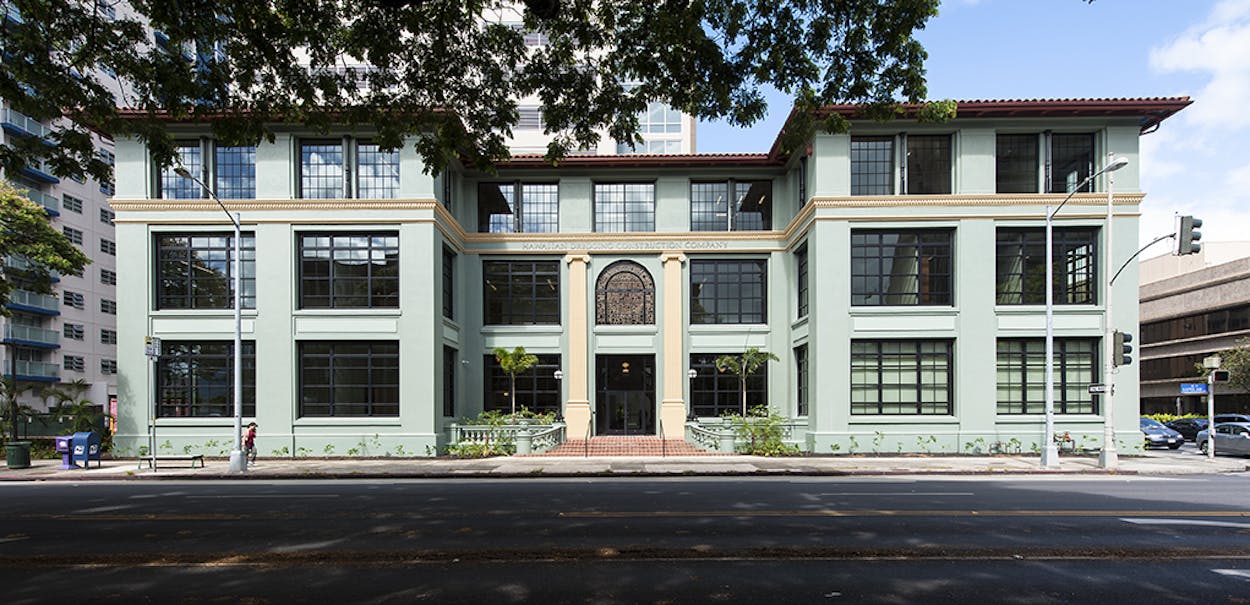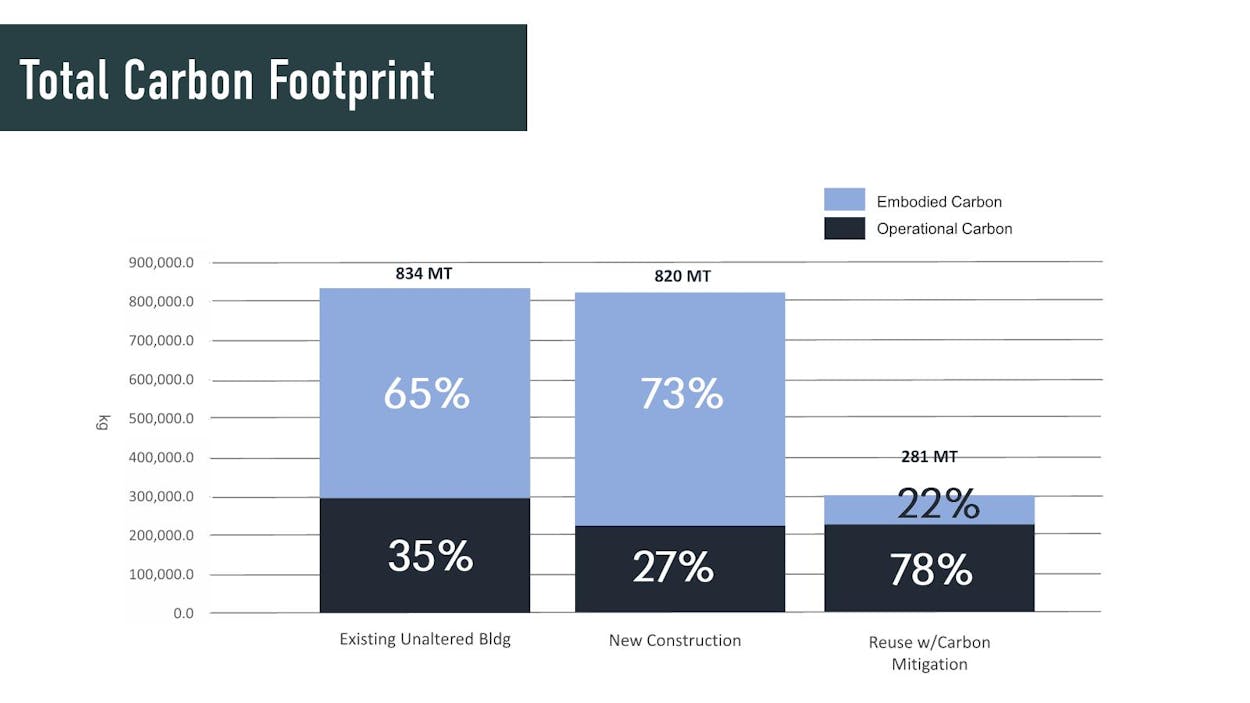STORIES
IS THE GREENEST BUILDING ONE THAT ALREADY EXISTS?
In the next 10 years, 80 percent of the carbon emissions emitted into the atmosphere will be a direct result of embodied carbon in buildings, while only 20 percent will be operational carbon emissions.
As cities continue to codify progressive energy codes and introduce renewable energy requirements, operational carbon will only decrease, and the focus will be on reduction of embodied carbon emissions.
Existing buildings attribute to 90 percent of our building stock and it is a known fact that building reuse and adaption is a strategy for carbon reduction. The former Advertiser building originally built in c1930 was renovated in 2017 when its new tenant, Hawaiian Dredging Construction Company, know the namesake of the building, took occupancy of the structure. The building underwent extensive work and serves as the subject in an analysis to determine the value of building reuse.
Using an LCA methodology to calculate the carbon emission footprint from cradle to grave, we compared the carbon footprint pre and post renovation and observed a carbon emission reduction of nearly 33 percent. This represents the carbon emissions mitigated from the reuse of the existing concrete core and shell; addition of a higher performing building envelope; and installation of an efficient HVAC system compliant with ASHRAE 90.1 2010.
We also learned that if we built a new structure to conventional building standards which currently do not account for the embodied carbon of building materials, the new construction building performed only 2 percent better than an the existing unaltered c1930 building. If a low embodied carbon material such as cross laminated timber were used as the flooring finish and substrate in the new structure, the potential embodied carbon emission reduction would be nearly 70 percent when compared to a suspended slab concrete floor. And ultimately lower the carbon footprint by 14 percent.
From this analysis we believe retaining existing structures in an adaptive reuse manner is a carbon-smart solution as it preserves the embodied carbon of the building. However, if we must demolish and build new, its critical that we as designers select low carbon materials to reduce embodied carbon emissions in buildings.
Link to the session here. Pre-registered attendees can sign-in to access the session and new attendees can pay to access the session.
Website designed and developed by Wall-to-Wall Studios.


